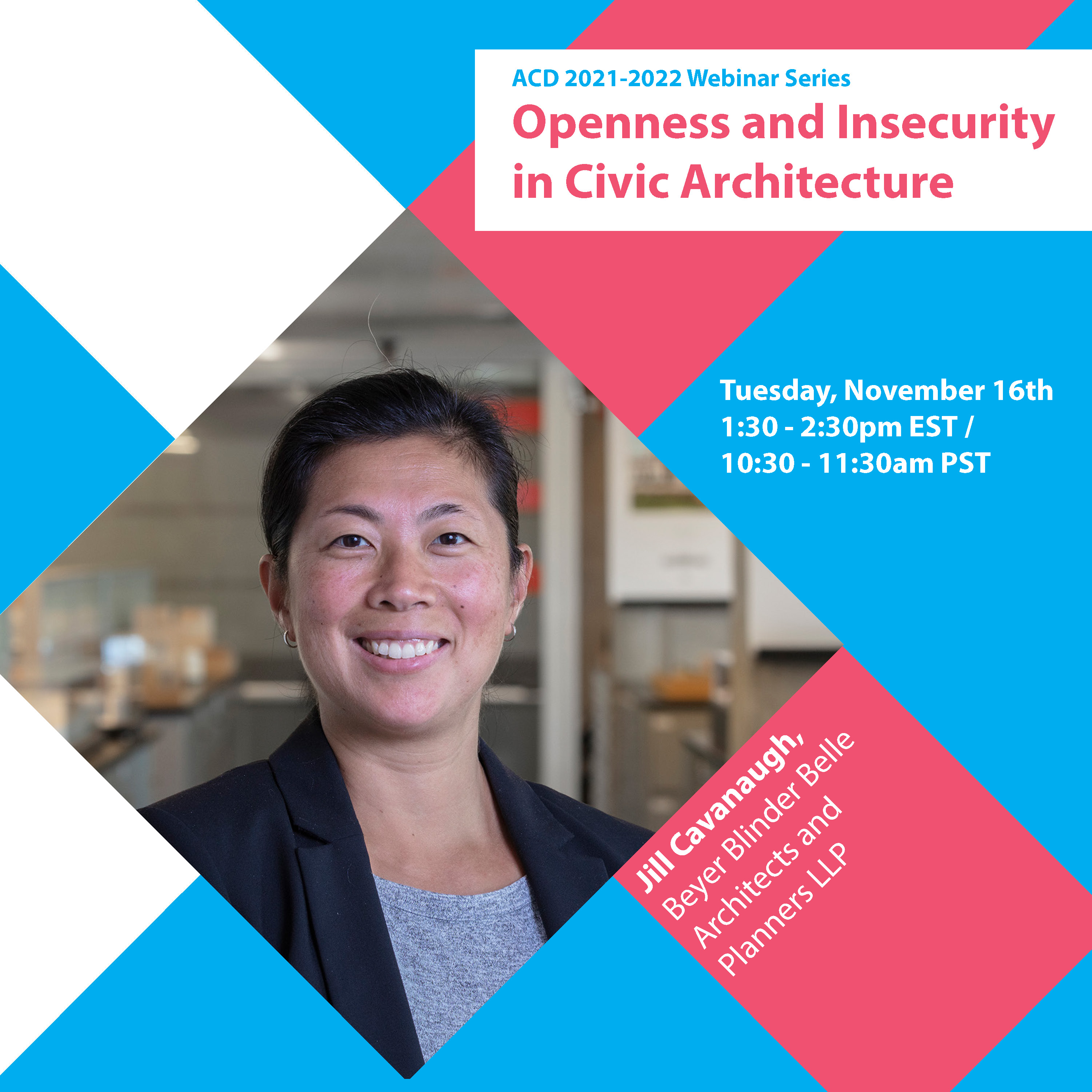
Openness and Insecurity in Civic Architecture
Jill Cavanaugh, Beyer Blinder Belle Architects and Planners LLP
Tuesday, November 16th
1:30pm - 2:30pm EST / 10:30am - 11:30am PST
Session Description:
Democracy and inclusion, principles traditionally exemplified by physical openness, are central to civic architecture. In recent years, a sense of exclusion has become more prominent in civic spaces, due to increased physical security measures. While the discourse continues to rapidly evolve, most recently because of the coronavirus pandemic, security planning is traditionally focused on deterrence and thereby exclusion.
Designers have a responsibility to mediate exclusion and inclusion in civic architecture. Our communities are vital in reconciling this perceived paradox: to bring people together but also keep them apart.
Facilitating inclusion, and overall social wellbeing, requires some level of security. The human desire to live without fear is primal; psychologist Abraham Maslow posited that security and stability needs must be satisfied before individuals can attend to more complex needs, such as socialization and self-actualization. To participate freely in society, we must feel safe. And since security needs can quickly change, the means of addressing these needs must be adaptable.
Designers and preservationists, who have long struggled with addressing issues unforeseen by original builders, have a responsibility to ensure that future generations can adapt today’s interventions. Engagement of local communities, particularly those that regularly use a site, can improve our forecasting of the site’s future challenges; however, our vision of the future will inherently remain incomplete.
Further fueling this paradox – and the related challenge to designers – is the fact that humans’ ability to recognize threats is imperfect. Risk compensation theory suggests that we intuitively adjust behavior based on perceived risk. When environments seem threatening, we raise our vigilance; when we feel protected, especially around well-recognized sources of risk mitigation, guards go down. Abundant security measures can, counterintuitively, make us less safe.
This session will ask: How do we facilitate inclusion and security in civic spaces? How will future generations answer this question?
#FindYourPeople #LearnTogether #DesignWithCommunities #CommunityDesign
Learning Objectives:
- Explore traditional archetypes and power structures than have historically underpinned our approach to civic architecture and their current relevance
- Explore how past experiences shape and affect representation and perception
- Discuss how we respond as actors in and directors of the built environment
- How representative projects represent this discourse
Speaker Bios:
As an architect, planner, and urban designer, Jill has diverse interdisciplinary experience on complex civic projects that require the integration of design excellence, security, and historic preservation and environmental compliance. She has completed award winning projects at historically significant sites including numerous monuments and memorials. In addition, Jill has a portfolio of international projects encompassing planning and design for sites of cultural significance, such as the Holy Mosque in Mekkah and multiple US embassies worldwide.
| Donate to Support ACD |